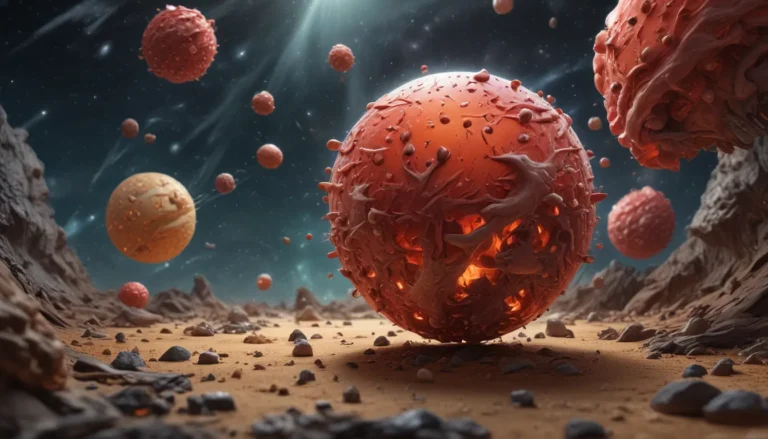A Note About Images: The images used in our articles are for illustration purposes only and may not exactly match the content. They are meant to engage readers, but the text should be relied upon for accurate information.
Welcome to the realm of critical temperature, a concept that continues to captivate scientists and researchers in the field of physics. In this article, we will embark on a journey to explore the fascinating world of critical temperature and uncover 15 astonishing facts about this remarkable phenomenon. From its role in superconductivity to its implications in cryogenics and beyond, critical temperature holds a pivotal place in the study of physics. Let’s delve deeper into the enigmatic nature of critical temperature and unravel its intriguing secrets.
Understanding Critical Temperature
Critical temperature refers to the temperature at which a substance undergoes a phase transition, transforming from one state to another with the application of critical pressure. This unique property has intrigued scientists for decades, leading to groundbreaking discoveries and applications.
Substance-Specific Critical Temperatures
Each substance possesses its own critical temperature, a defining characteristic that influences its physical properties. For instance, water has a critical temperature of 374 degrees Celsius (705 degrees Fahrenheit), while carbon dioxide exhibits a critical temperature of -78 degrees Celsius (-108 degrees Fahrenheit).
Role of Critical Temperature in Superconductivity
One of the most compelling applications of critical temperature is in the field of superconductivity. Certain materials can achieve zero electrical resistance when cooled below their critical temperature, paving the way for efficient energy transmission and storage.
The Discovery and Significance of Critical Temperature
The phenomenon of critical temperature was first elucidated by the Dutch physicist Heike Kamerlingh Onnes. He observed that certain metals, when cooled to extremely low temperatures, exhibited a sudden loss of electrical resistance, marking a groundbreaking discovery in the field of physics.
Unlocking Possibilities in Cryogenics
Critical temperature plays a crucial role in the realm of cryogenics, where materials are studied and manipulated at extremely low temperatures. Cryogenic liquids like liquid nitrogen and helium demonstrate unique properties below their critical temperatures, offering valuable insights for scientific research and technological applications.
Exploring Phase Transitions at Critical Temperature
At the critical temperature, substances undergo phase transitions, shifting between different states such as liquid, gas, or superfluid. These transitions reveal intriguing behaviors of matter under specific conditions, shedding light on the fundamental nature of physical phenomena.
Critical Temperature and the Ideal Gas Law
The concept of critical temperature is closely intertwined with the ideal gas law, which describes the behavior of gases at different temperatures and pressures. Above the critical temperature, gases exhibit ideal gas behavior, whereas deviations occur below this critical point.
Implications for Chemical Processes
Critical temperature exerts a significant influence on chemical processes, enabling scientists to optimize extraction and separation techniques by manipulating temperature and pressure conditions. This precise control enhances the efficiency and selectivity of various chemical processes.
Unveiling High-Pressure Phenomena
Understanding critical temperature is essential in the field of high-pressure physics, where materials are subjected to extreme pressures and temperature conditions. This research allows scientists to explore new phenomena and behaviors of substances under challenging environments.
Harnessing Energy Storage Capabilities
Materials with high critical temperatures hold promise for advanced energy storage systems, enabling efficient transmission and utilization of electrical power. Superconducting materials offer innovative solutions for enhancing energy grids and technological advancements.
Applications in Magnetic Resonance Imaging (MRI)
Critical temperature is leveraged in magnetic resonance imaging (MRI) technology, where superconducting magnets cooled to critical temperatures generate intense magnetic fields essential for medical imaging. This application highlights the diverse and practical uses of critical temperature in modern technology.
Pioneering Research on Superconductivity
Scientists are continuously working to discover materials with higher superconducting critical temperatures, aiming to revolutionize various fields including energy transmission, transportation, and quantum computing. These advancements have the potential to reshape the way we harness and utilize energy in the future.
Environmental Factors and Critical Temperature
External factors such as pressure and impurities can significantly impact the critical temperature of a substance, influencing its behavior and properties. By carefully controlling these factors, scientists can manipulate materials and explore novel phenomena in diverse scientific fields.
Unveiling the Mysteries of Fundamental Physics
The study of critical temperature offers valuable insights into the fundamental nature of matter and the behavior of substances under extreme conditions. By pushing the boundaries of our understanding of the physical world, scientists can uncover new discoveries and phenomena that enrich our knowledge of the universe.
Exploring Critical Temperature in Astrophysics
Critical temperature concepts extend beyond Earth-bound applications, playing a crucial role in understanding the behavior of matter in celestial objects such as stars and planets. By studying critical temperature in the context of astrophysics, scientists can gain valuable insights into the universe’s complex dynamics.
Conclusion: Embracing the Wonders of Critical Temperature
In conclusion, critical temperature stands as a captivating concept in physics with far-reaching implications across various scientific disciplines. From its role in superconductivity to its applications in cryogenics and beyond, critical temperature has revolutionized our understanding of physical phenomena. By delving into the astonishing facts about critical temperature, we enrich our comprehension of matter’s behavior and unlock new possibilities in the realm of physics. Let us continue to explore and embrace the mysteries of critical temperature, fueling our curiosity and inspiring future discoveries in the field of science.
FAQs: Unveiling Answers to Common Questions
- What is critical temperature?
Critical temperature refers to the temperature at which a substance undergoes a phase transition, marking a pivotal point in its physical properties and behavior.
- How is critical temperature different from melting or boiling point?
While melting and boiling points represent specific temperatures at which substances change phase at a given pressure, critical temperature signifies the temperature at which substances transition between different phases, independent of pressure.
- Can all substances have a critical temperature?
Not all substances exhibit critical temperature phenomena, as only materials that undergo phase transitions can possess a critical temperature characteristic.
- Why is critical temperature important in superconductivity?
Critical temperature plays a crucial role in superconductivity, as it denotes the temperature at which materials exhibit zero electrical resistance, enabling groundbreaking advancements in energy transmission and storage.
- How does critical temperature impact cryogenics?
Critical temperature influences cryogenics by determining the temperature at which certain materials become superfluids, offering unique properties valuable for technological applications in various fields.
- Are there substances with negative critical temperatures?
No, substances do not possess negative critical temperatures, as critical temperature represents a threshold above which a substance cannot exist in a liquid or gas state.
- How do scientists determine critical temperatures?
Scientists identify critical temperatures through experimental techniques involving precise measurements of pressure, volume, and conductivity changes as temperature varies, allowing them to pinpoint the critical point of phase transitions.
- Can critical temperature be altered or controlled?
In certain cases, critical temperature can be influenced by modifying the material’s composition or applying external pressure, offering opportunities to enhance or manipulate critical temperatures for specific applications and advancements in science and technology.
Delve Deeper into the Enigmatic World of Critical Temperature
Curious minds eagerly seek more knowledge and understanding of the enigmatic phenomenon of critical temperature. Explore the specific value of Tc and unravel the mysteries of the Meissner effect, intricately linked to superconductivity. Prepare to be amazed by the unbelievable facts surrounding superconductivity that challenge conventional wisdom, offering a glimpse into the captivating world of physics. Each topic presents a unique perspective on critical temperature, promising to satisfy your intellectual curiosity and inspire further exploration. Don’t miss this opportunity to expand your knowledge and delve deeper into the captivating realm of critical temperature and its profound implications.
Empowering Curiosity with Trustworthy Content
Our commitment to providing trustworthy and engaging content underscores our dedication to delivering valuable insights and information. Every fact shared on our platform is contributed by real users, ensuring a diverse range of perspectives and knowledge. Our editorial team meticulously reviews each submission to uphold the highest standards of accuracy and reliability. Trust in our unwavering commitment to quality and authenticity as you explore and learn with us, unlocking the wonders of critical temperature and its remarkable implications in the world of physics.






